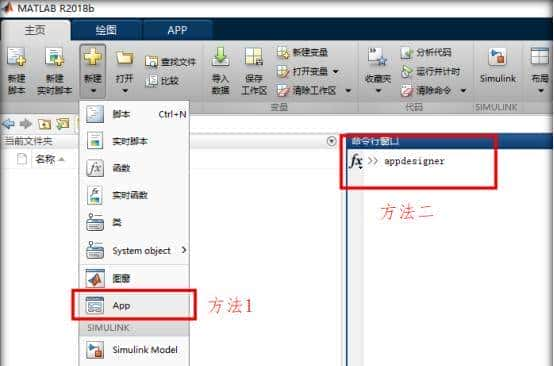随着区块链技术的快速发展,TP区块链(以TP钱包/TP链为代表)凭借其高性能、跨链互操作性和开发者友好性,成为众多开发者和用户的首选。本文将从基础概念、技术原理、下载部署、代码实践四个维度,系统讲解TP区块链的核心技术,并通过Python代码示例展示如何与TP链交互,适合初学者快速入门。
一、TP区块链基础:为什么选择TP链?
1.1 TP链的核心特性
TP链(如TP钱包支持的底层链)是一种高性能公链,具有以下特点:
高吞吐量:TPS(每秒交易数)可达数千级,满足高频交易需求。跨链互操作性:支持与以太坊、BSC等主流链的资产互通。低Gas费:交易成本远低于以太坊,适合小额支付和DeFi应用。开发者友好:提供完善的SDK和工具链,支持Solidity、Rust等多语言开发。
1.2 TP链的应用场景
数字钱包:TP钱包支持多链资产存储和交易。DeFi协议:去中心化交易所、借贷平台等。NFT市场:数字艺术品发行与交易。GameFi:链游经济系统搭建。
二、TP区块链下载与部署:从零开始搭建环境
2.1 下载TP链节点软件
TP链的节点软件可通过官方GitHub仓库获取:
bash
# 克隆TP链官方代码库(示例)
git clone https://github.com/tp-chain/tp-node.git
cd tp-node2.2 配置节点环境
修改配置文件
config.toml
toml
[chain]
id = "tp-mainnet" # 主网或测试网
rpc_port = 8545 # RPC服务端口
ws_port = 8546 # WebSocket端口
[node]
data_dir = "./data" # 节点数据存储路径2.3 启动节点
bash
# 编译并启动节点(Linux/macOS)
./build.sh && ./tp-node --config config.toml节点启动后,可通过RPC接口与链交互。
三、TP区块链核心代码实践:Python交互示例
3.1 使用Web3.py连接TP链
安装依赖库:
bash
pip install web3连接TP链的Python代码:
python
from web3 import Web3
# 连接TP测试网(示例RPC地址)
tp_rpc_url = "https://testnet.tpchain.io/rpc"
w3 = Web3(Web3.HTTPProvider(tp_rpc_url))
# 检查连接状态
if w3.is_connected():
print("成功连接到TP链测试网!")
print(f"当前区块高度: {w3.eth.block_number}")
else:
print("连接失败,请检查RPC地址!")3.2 查询账户余额
python
# 示例账户地址(测试网)
account_address = "0x123...abc" # 替换为实际地址
# 查询ETH余额(TP链原生代币为TP,此处以ETH为例)
balance_wei = w3.eth.get_balance(account_address)
balance_eth = w3.from_wei(balance_wei, "ether")
print(f"账户余额: {balance_eth} ETH")3.3 发送交易(转账示例)
python
from web3.middleware import geth_poa_middleware
# 添加POA(权威证明)中间件(TP测试网可能需要)
w3.middleware_onion.inject(geth_poa_middleware, layer=0)
# 发送ETH转账交易
def send_transaction(sender_private_key, receiver_address, amount_eth):
# 转换为wei单位
amount_wei = w3.to_wei(amount_eth, "ether")
# 构建交易
nonce = w3.eth.get_transaction_count(sender_address)
tx = {
'nonce': nonce,
'to': receiver_address,
'value': amount_wei,
'gas': 21000, # 基础Gas消耗
'gasPrice': w3.eth.gas_price,
'chainId': 123, # 替换为TP链的实际chainId
}
# 签名并发送交易
signed_tx = w3.eth.account.sign_transaction(tx, private_key=sender_private_key)
tx_hash = w3.eth.send_raw_transaction(signed_tx.rawTransaction)
print(f"交易哈希: {tx_hash.hex()}")
return tx_hash
# 示例调用(需替换实际私钥和地址)
sender_private_key = "0x456...def" # 发送方私钥(务必保密!)
sender_address = w3.eth.account.private_key_to_account(sender_private_key).address
receiver_address = "0x789...ghi" # 接收方地址
send_transaction(sender_private_key, receiver_address, 0.1)3.4 部署智能合约(Solidity示例)
3.4.1 编写合约(SimpleStorage.sol)
solidity
// SPDX-License-Identifier: MIT
pragma solidity ^0.8.0;
contract SimpleStorage {
uint256 storedData;
function set(uint256 x) public {
storedData = x;
}
function get() public view returns (uint256) {
return storedData;
}
}3.4.2 使用Python部署合约
python
from web3 import Web3
from solcx import compile_source
# 编译Solidity合约
compiled_sol = compile_source("""
// 上述合约代码粘贴于此
""")
contract_id, contract_interface = compiled_sol.popitem()
# 获取合约ABI和字节码
abi = contract_interface['abi']
bytecode = contract_interface['bin']
# 部署合约
def deploy_contract(private_key, w3_instance):
# 创建合约对象
SimpleStorage = w3_instance.eth.contract(abi=abi, bytecode=bytecode)
# 构建部署交易
nonce = w3_instance.eth.get_transaction_count(sender_address)
tx = {
'nonce': nonce,
'gas': 500000, # 预估Gas消耗
'gasPrice': w3_instance.eth.gas_price,
'chainId': 123, # 替换为实际chainId
}
# 签名并发送交易
construct_tx = SimpleStorage.constructor().buildTransaction(tx)
signed_tx = w3_instance.eth.account.sign_transaction(
construct_tx, private_key=private_key
)
tx_hash = w3_instance.eth.send_raw_transaction(signed_tx.rawTransaction)
# 等待交易确认
tx_receipt = w3_instance.eth.wait_for_transaction_receipt(tx_hash)
print(f"合约部署成功!地址: {tx_receipt.contractAddress}")
return tx_receipt.contractAddress
# 示例调用
contract_address = deploy_contract(sender_private_key, w3)四、TP区块链学习资源推荐
官方文档:
TP链开发者文档TP钱包GitHub仓库 开发工具:
Remix IDE:在线Solidity开发环境。Hardhat:专业的区块链开发框架。Truffle Suite:合约编译、测试和部署工具。 社区支持:
TP链Discord社区CSDN区块链技术论坛
五、总结与展望
本文通过基础概念、环境部署、代码实践三部分,系统讲解了TP区块链的核心技术。通过Python与TP链的交互示例,读者可以快速掌握:
如何连接TP链节点查询账户和交易发送转账和部署智能合约
未来,TP链将继续优化跨链性能和开发者体验,推动区块链技术在金融、物联网、供应链等领域的落地。建议开发者从测试网开始实践,逐步深入底层原理,最终参与到TP生态的建设中。
立即行动:访问TP链官方文档,获取最新开发工具和测试网代币,开启你的区块链开发之旅!
© 版权声明
文章版权归作者所有,未经允许请勿转载。
相关文章

暂无评论...











